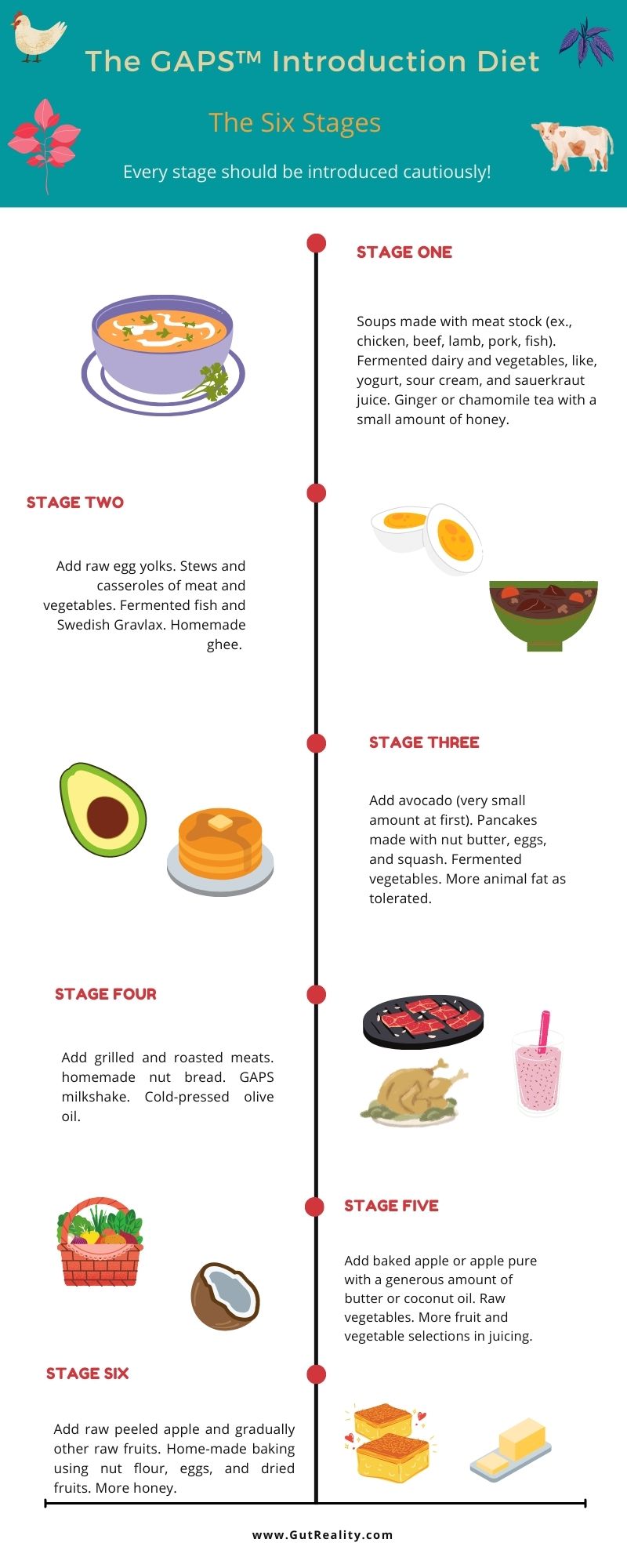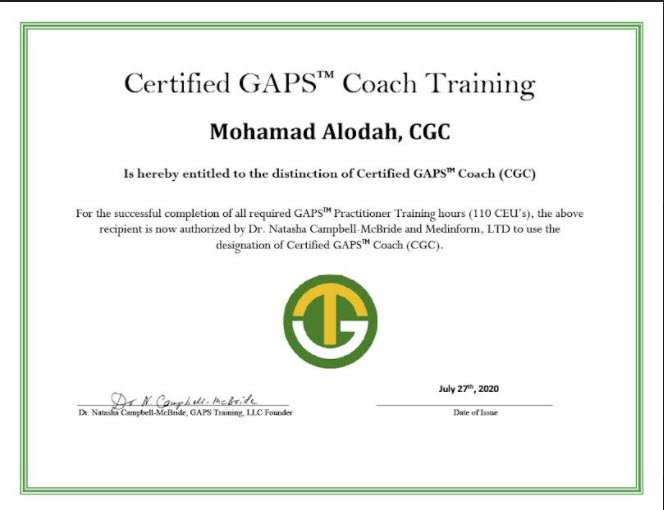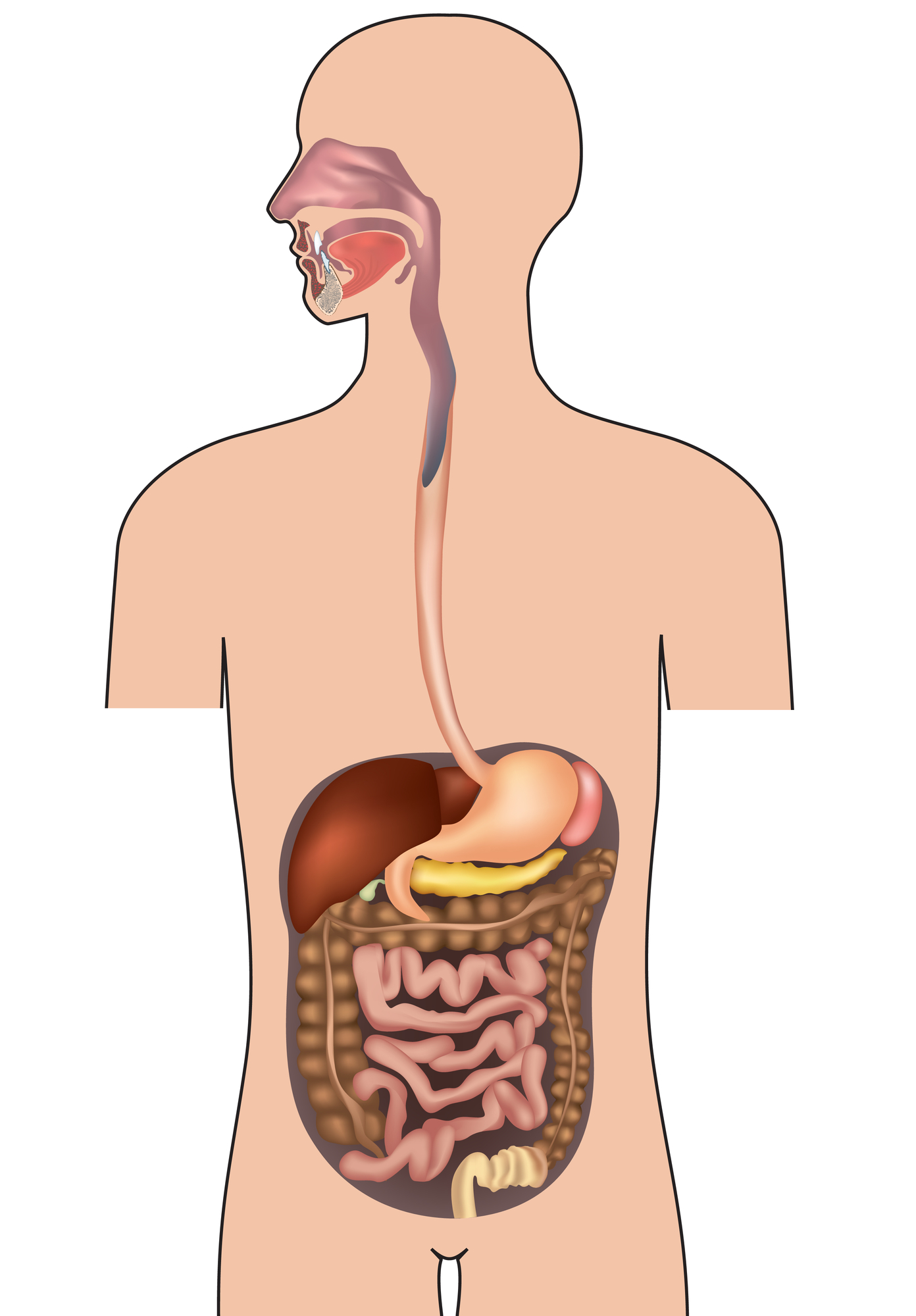For the latest updates and offers on new products & books, sign up today!
The GAPS Diet Stages
There are several reasons someone would start the GAPS diet. One primary reason being you are suffering from a chronic digestive disorder. If that’s the case, then the six-stage intro diet is the best place to start from. Here are important details about the GAPS diet stages:
Stage 1: Soups made with meat stock (ex., chicken, beef, lamb, pork, fish). Fermented dairy and vegetables, like, yogurt, sour cream, and sauerkraut juice. Ginger or chamomile tea with a small amount of honey.
Stage 2: Add raw egg yolks. Stews and casseroles filled with meat and vegetables. Fermented fish and Swedish gravlax. Homemade ghee.
Stage 3: Add avocado (very small amount at first). Pancakes made with nut butter, eggs, and squash. Fermented vegetables. More animal fat as tolerated.
Stage 4: Add grilled and roasted meats. Homemade nut bread. GAPS milkshake. Cold-pressed olive oil.
Stage 5: Add baked apples or apple puree with a generous amount of butter or coconut oil. Raw vegetables. More fruit and vegetable selections in juicing.
Stage 6: Add raw peeled apples and gradually other raw fruits. Homemade baking using nut flour, eggs, and dried fruits. More honey.
A Word of Caution with the GAPS Diet Stages
Dr. Natasha Campbell Macbride, who is the creator of this diet protocol, explains how she advises her patients to do the sensitivity test when they are transiting from one stage to another. You do this test whenever a food allergy is suspected and when new food is added to your diet.
For example, if you are following the GAPS diet stages and introducing an egg yolk to your meal, it is a good idea first to rub a small amount of the egg yolk on the inside of your wrist and leave it there for 24 hours or overnight.
The next day if you see skin redness or a spot on your wrist and it feels itchy, that’s a sign your body is having some type of anaphylactic reaction and you should not introduce this new food to your diet.
Dr. Natasha’s method is to introduce a small amount of something into your diet. But to prevent any allergic reaction, she asks her clients to do the sensitivity test. However, If there is no reaction then you can introduce the food in small portions based on Dr. Natasha’s advice.
As you move from one stage to the next, you may start to have an easier time transitioning, which is a wonderful thing to celebrate, as your gut is healing measurably. On the other hand, you may go back and forth between the stages as your digestive system is not ready yet to deal with some of the new foods being introduced.
Don’t lose hope or motivation if that happens. Be patient and give your body more time to heal and seal that leaky gut and after a few days, try again and see if you can tolerate the newly added food. Remember to take it slow, don’t overwhelm your body, and know that your gut is unique and not going to have the same results as someone else’s.









